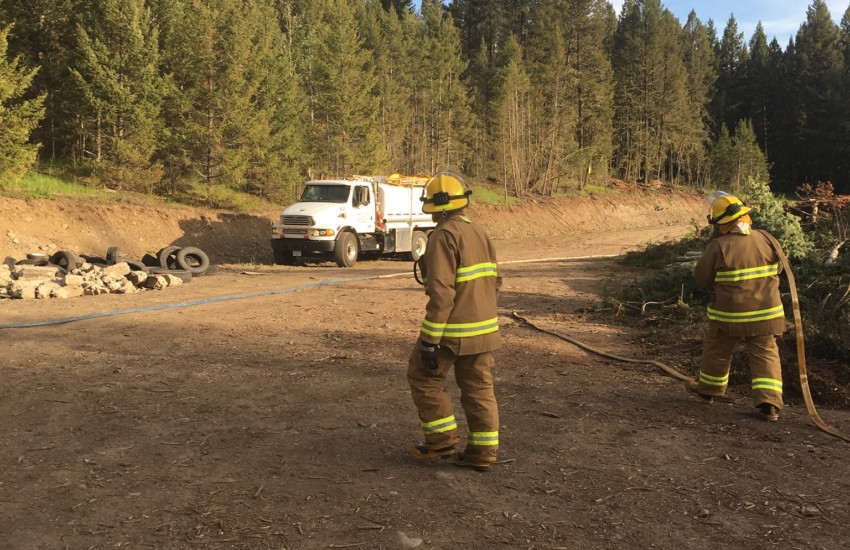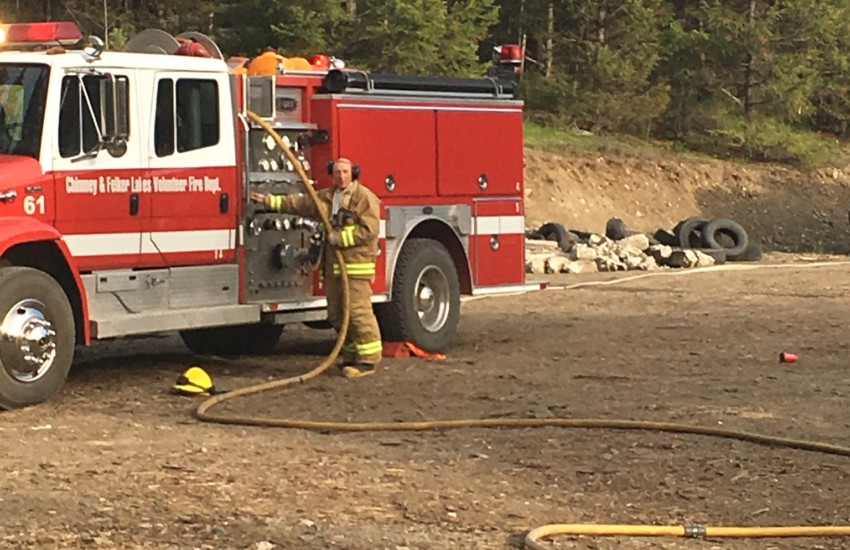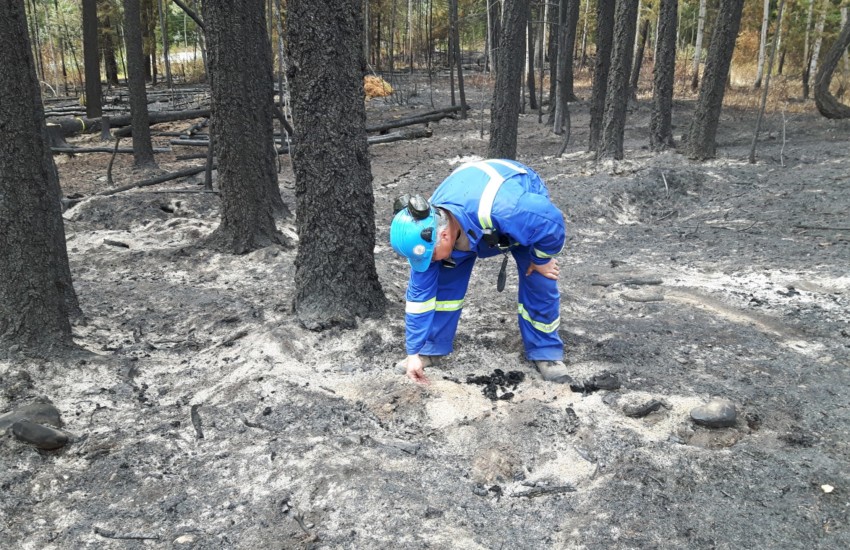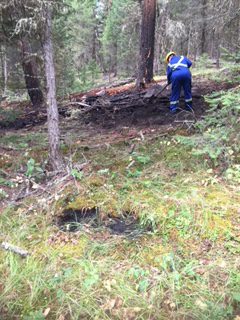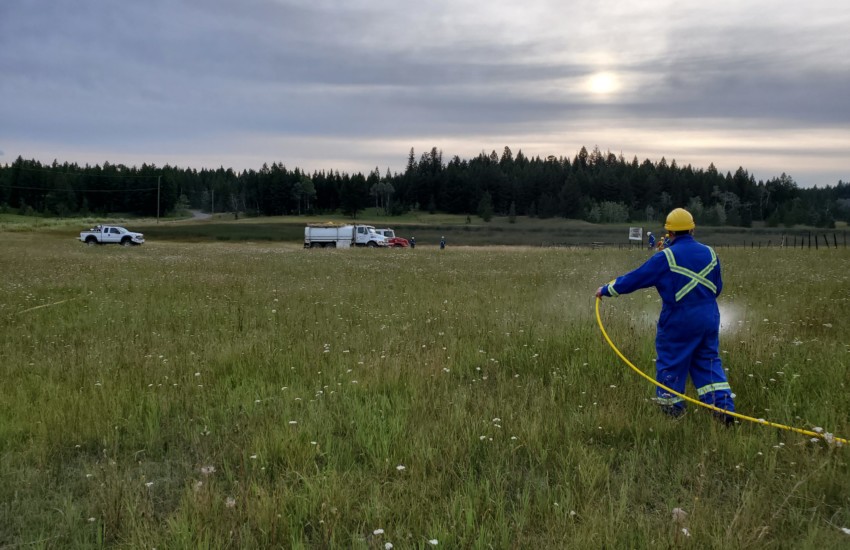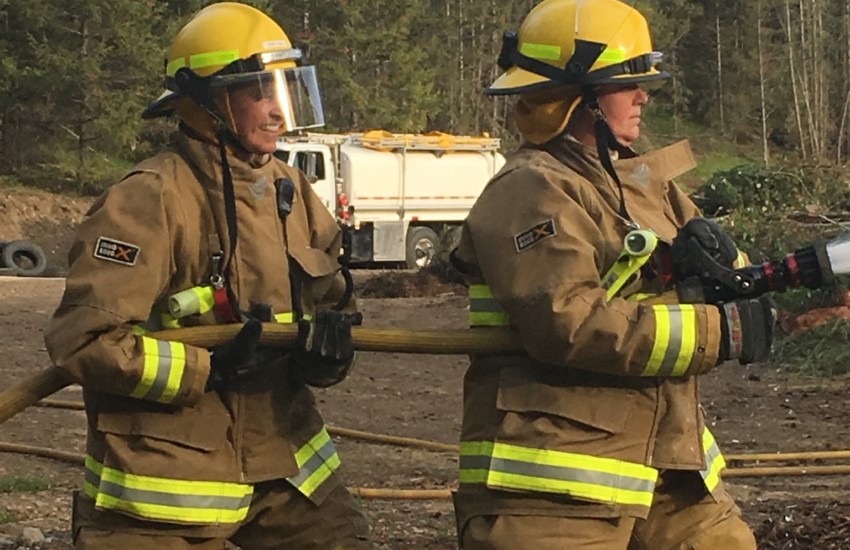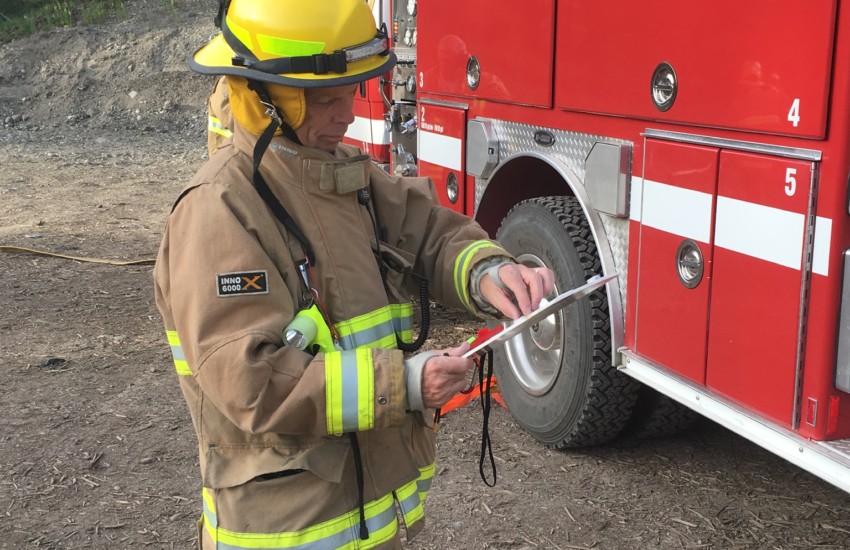IMPORTANT NOTICE: Fire suppression service on private property is only provided to members who display a visible, reflective CFVFD sign indicating that they are Members in good standing and that they will allow external fire suppression service on their property.
In The Community There Are:
- 140 Homes
- 29 Mobile Homes
- 18 seasonal homes or cabins
- 4 Campsites grounds
- 23 privately owned vacant land
- No commercial buildings but a few home based businesses and a few large workshops and garages.
- 95% of the structures are within 6km of the fire hall.
6 properties located on the south side of the lake are outside our coverage area because road access is difficult and we have no boat capability.
If you have an emergency, CALL 911 – they will call us.
Our community hall doubles as a fire hall, so that means moving our tender off the dance floor for party nights.
No fire hydrants for this rural department so we get water for fire operations from the lakes. We back out trucks to one of seven drafting sites. In winter this requires snow ploughing and an ice auger, thus the ice auger included in our crest.
Neighbouring fire departments are Williams Lake, 150 Mile House, Lac la Hache, but because of the administrative distance limitations we do not have mutual aid agreements with our neighbours but we do occasionally train together.
In the summer of 2017, after we evacuated the community and staged a crew or our firefighters to stay in the community, we worked for the Office of the Fire Commissioner assisting our neighbouring departments of Williams Lake and Miocene in the wildfire control.
We are are 100% volunteer. We have WorkSafe BC coverage, ‘just in case’. Almost all of our firefighters have Level 1 First Aid training and Transportation Endorsement.
We are an independent department. That means we do not receive any regular taxation based funding. Fire suppression service on private property is only provided to members who display a visible, reflective CFVFD sign indicating that they are Members in good standing and that they will allow external fire suppression service on their property.
We operate using funds from community membership dues, community fund raising events, occasional grants and donations.
Most Common Emergency Calls:
- Motor vehicle accidents, (roll over, car vs. deer)
- Medical assistance (slip and fall, heart attack)
- Wildland fires (lightning strike)
Our Apparatus:
- Pumper 61 – 1996 E-One/Freightliner, 750 igal tank, 1500 igpm pump
- Tender 62 – 2001 Sterling Tender, 4000 igal, 750 igm
- Wildland 63 – 2012 Ford F35 Ext cab 4×4, 250 igal tank, 100 pgm pump
- We also have periodical on loan from members additional pickup trucks, water tanks and trailers
Hints & Reminders:
- Do you have a fire extinguisher handy?
- When did you last test your smoke detector?
- Do you have a carbon monoxide detector in your home?
- How you can reduce the chance of a chimney fire.
- Use only well dried wood. That means if the tree was alive this summer, don’t use it for a year or more.
- Use a chimney thermometer to help identify efficient burning (it reduces smoke and saves you money too).
- If you have a glass door and it gets to dirty to see the fire, you are likely also building up creosote in the chimney.
- Creosote is the black gooey to crispy coating on the inside of your chimney. It builds up and eventually ignites producing extremely high (over 1000°C) temperatures so hot they can ignite asphalt roofing, plywood roof sheeting and roof trusses.
- Clean your chimney regularly.
- Have a professional inspection and cleaning annually.
- Did you know you can control a chimney by tossing wet dish rag into the fire box and close the door. Call the fire department.
- If you’ve had one chimney fire, it means the next one is far more likely to be catastrophic.
9 Signs of a Chimney Fire
And what a Professional Chimney Sweep looks for to Identify if a Chimney Fire has Occurred:
- “Puffy” or “honey combed” creosote
- Warped metal of the damper, metal smoke chamber connector pipe or factory-built metal chimney
- Cracked or collapsed flue tiles, or tiles with large chunks missing
- Discolored and/or distorted rain cap
- Heat-damaged TV antenna attached to the chimney
- Creosote flakes and pieces found on the roof or ground
- Roofing material damaged from hot creosote
- Cracks in exterior masonry
- Evidence of smoke escaping through mortar joints of masonry or tile liners
Volunteer Fire Crew Personnel
- Fire department members are your neighbors. It simply doesn’t operate without community involvement.
- New members are always welcome. There are a variety of jobs for volunteers of all levels of skill and physical ability. Training is at 7:00pm Tuesday nights. Come and see us in action or join in!
